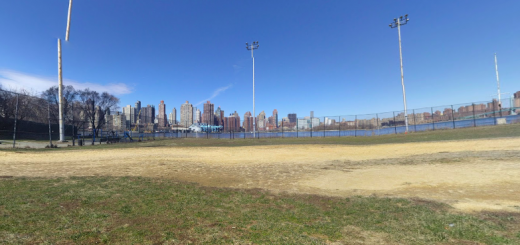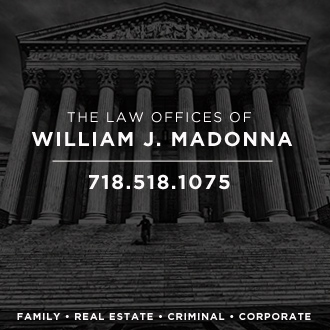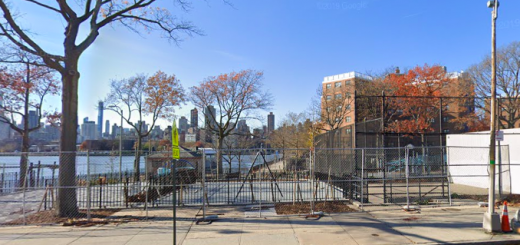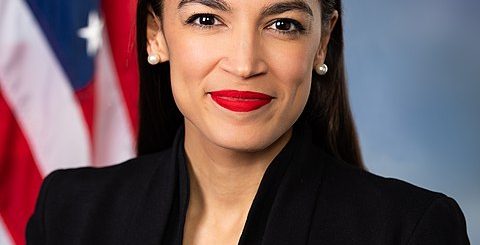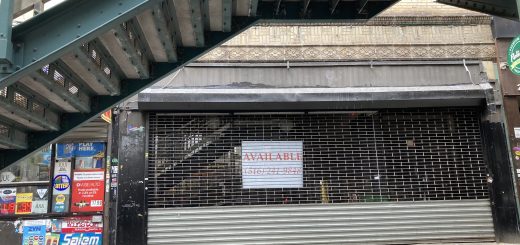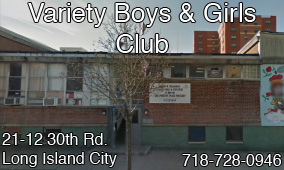Advocates discuss a renewable future at Rikers Island
When New York City closes its contentious jail on Rikers Island in 2027 or even earlier, what should officials do with the 413-acre island?
Many local elected officials, environmental advocates and criminal justice reformers say they want Rikers to become a hub for renewable infrastructure.
“We all know the moral and social justice imperatives of closing Rikers Island,” said Councilman Costa Constantinides. “But we can make sure that this land is never used for any other atrocity again.”
Last Thursday, Constantinides hosted a panel of advocates and experts at the Jewish Center of Jackson Heights to discuss the challenges, strategies and considerations to make a renewable Rikers possible.
 Several lawmakers, including Congresswoman Alexandria Ocasio-Cortez, Councilman Daniel Dromm, State Senator Jessica Ramos and Assemblywoman Catalina Cruz, praised the idea.
Several lawmakers, including Congresswoman Alexandria Ocasio-Cortez, Councilman Daniel Dromm, State Senator Jessica Ramos and Assemblywoman Catalina Cruz, praised the idea.
“A renewable Rikers Island is exactly the kind of vision we can espouse, create, develop and then bring to fruition,” Ocasio-Cortez said. “Don’t let anyone try to tell you that the things we’re talking about are unrealistic or impossible.
“Once we establish the vision,” she added, “we’ve taken the first step to getting it done.”
The first-term congresswoman warned that the “powerful real estate lobby” will want to capitalize on every square inch of space “to make a buck.”
“Create it as a positive place for the people, instead of a playground for the rich,” Ocasio-Cortez said.
When the Independent Commission on New York City Criminal Justice and Incarceration Reform –– more commonly known as the Lippman Commission –– issued its report in 2017, it also suggested using the island for environmental infrastructure.
Stanley Richards, executive vice president of the Fortune Society and a member of the commission, said they created a roadmap on how to close Rikers and use those funds to reinvest in communities hit hardest by incarceration.
“We can take the 400 acres and use it to improve the environmental conditions of a lot of communities that bear the brunt of environmental concerns,” he said.
Constantinides, who chairs the City Council’s Environmental Protection Committee, partnered with CUNY Law School’s Center for Urban Environmental Reform (CUER) to further study the possibility.
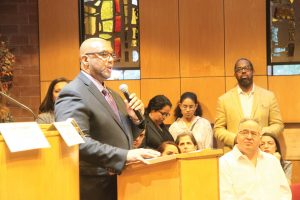
According to the councilman, using just 100 acres, or one-quarter of the land on Rikers Island, for solar energy would be enough to close every secondary power plant opened in the last two decades.
Communities with power plants and wastewater treatment plants, like Astoria, College Point and the South Bronx, could see the closure of those facilities, he said.
“Rikers can be the seed for all of that to grow,” Constantinides said.
Professor Rebecca Bratspies, director of the CUNY’s CUER, said communities most burdened by mass incarceration are often the same communities “at the front lines of climate change.”
Bratspies said shutting Rikers as a jail and transforming the sustainable future of the city could be an opportunity to “resolve layer upon layer of injustice at the same time.”
“We have the opportunity to convert Rikers from a blight to an asset,” she said. “We can benefit the whole city, specifically communities most impacted by incarceration at Rikers.”
A panel of experts from environmental and criminal justice groups added their own ideas. Cecil Corbin-Mark, deputy director of WE ACT for Environmental Justice, floated the idea of putting both greenhouses on Rikers and growing marijuana there.
“Billionaires are getting in on the ground floor, yet people who are on Rikers for selling small quantities of marijuana don’t have access to that market,” he said. “That redemption should come to make sure the price they paid is a ticket to the ground floor of this economy.”
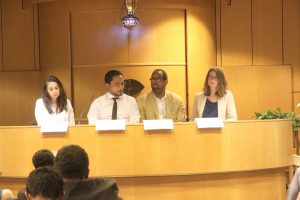 Corbin-Mark also suggested training people coming out of Rikers to install solar panels, creating a pathway to the green economy.
Corbin-Mark also suggested training people coming out of Rikers to install solar panels, creating a pathway to the green economy.
Asked to identify the challenges that may prevent this vision from happening, Rachel Spector, director of environmental justice for New York Lawyers for the Public Interest, said a big one is money.
“There must be a mobilization to get that money,” she said.
Other panelists said codifying renewable energy goals and changing land use are other challenges.
Maritza Sila-Farrell, executive director of ALIGN, added that communities need to be part of the process after Rikers is closed. Corbin-Mark said.
“They need to see a different future for themselves,” he said. “If we don’t do that, we will fail.”
Constantinides immediately took action after the town hall event, launching a petition to support the proposal on his City Council website.
On Monday, he teamed up with Manhattan Councilwoman Helen Rosenthal to announce a package of three bills, the Renewable Rikers Act, to make it happen.
The first legislation would transfer control of the island from the Department of Corrections to the Department of Environmental Protection.
The second bill would require the city to determine the renewable energy capacity on the island. The last piece would assess how much wastewater can be diverted to the island, which would allow the city to close other facilities in overburdened communities.
The legislators will introduce the package at Thursday’s City Council meeting.
“We need to plan now, and then start to implement what we’re talking about,” Constantinides said last week. “We don’t have to wait because our city shouldn’t wait.”





